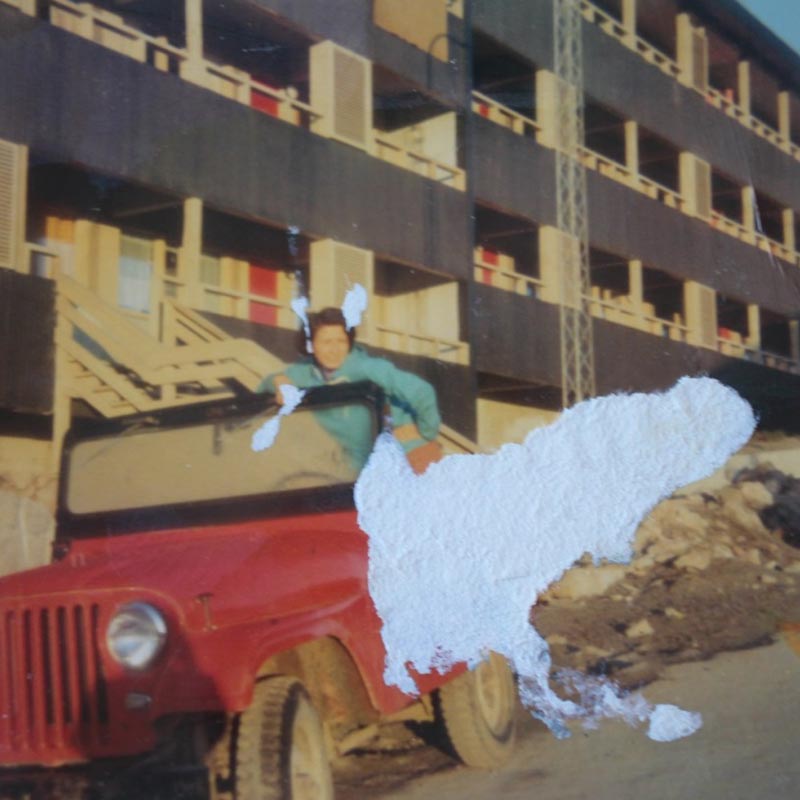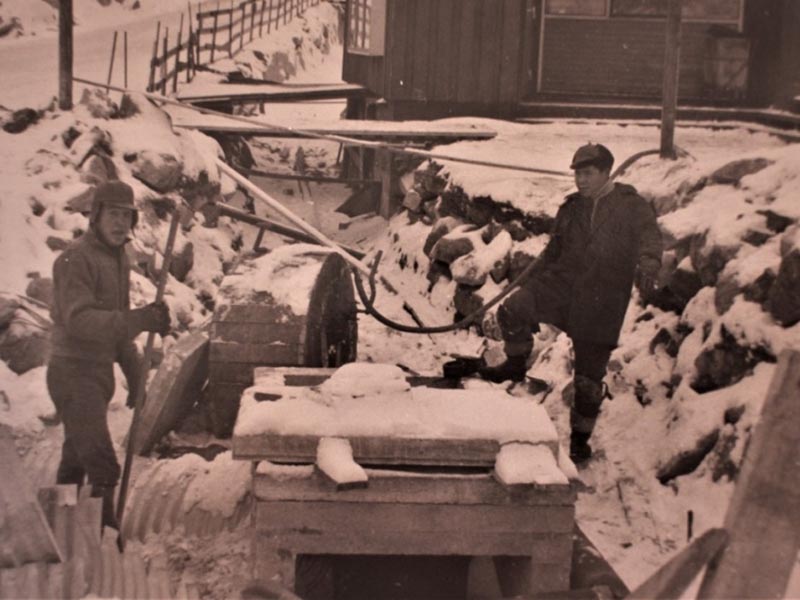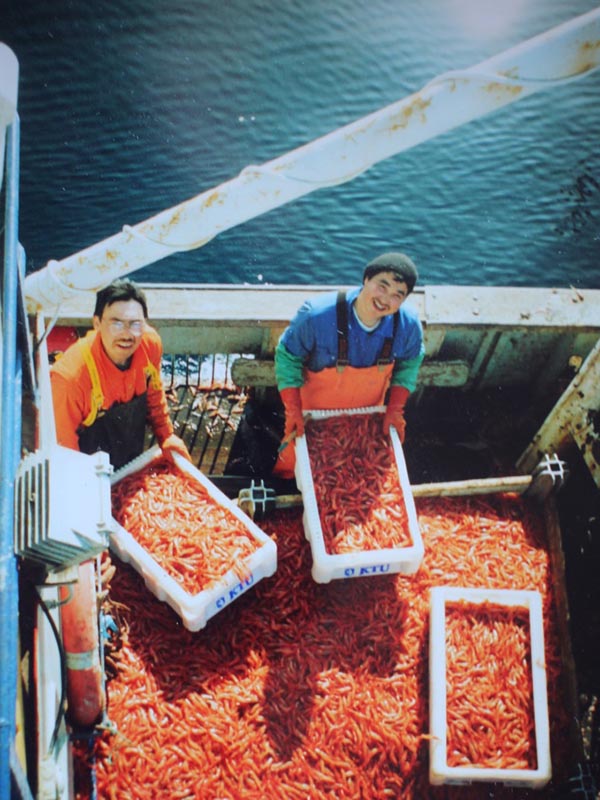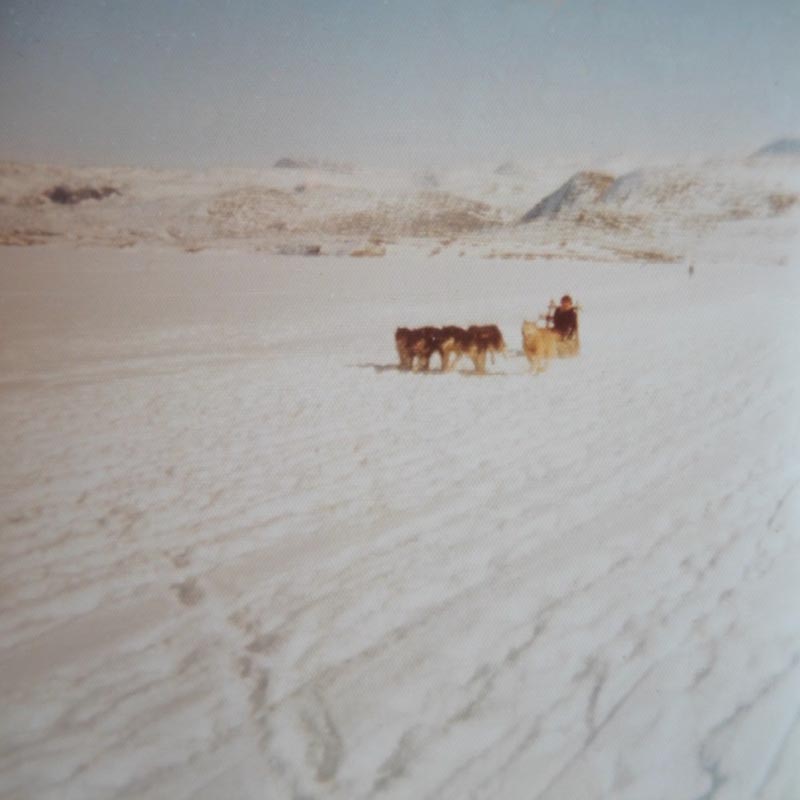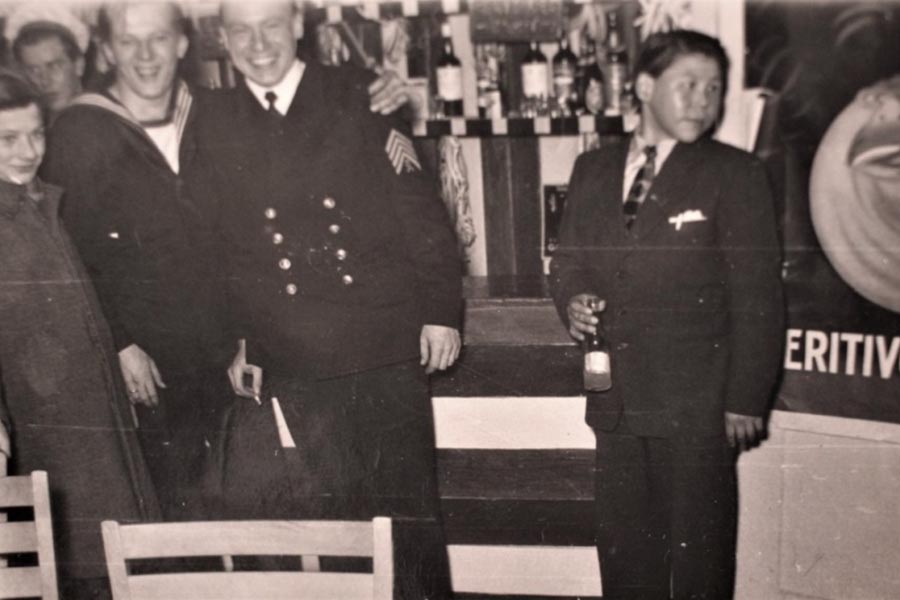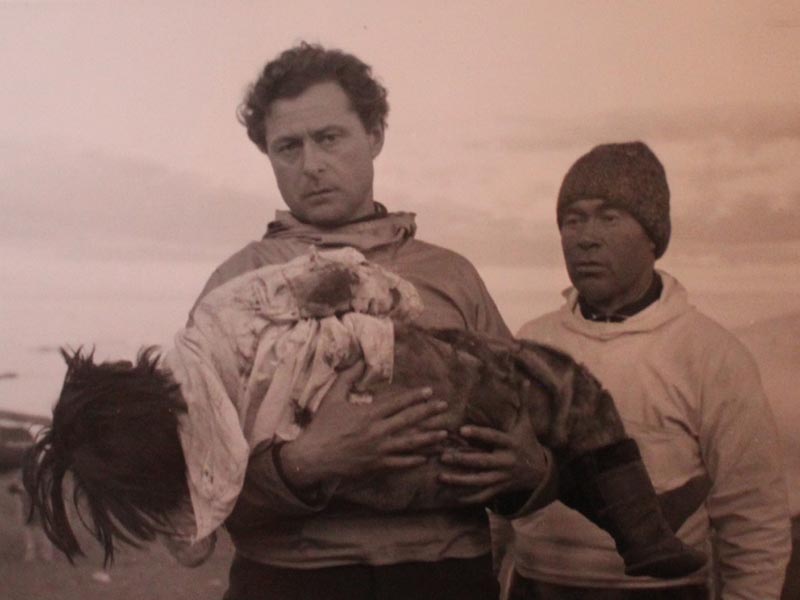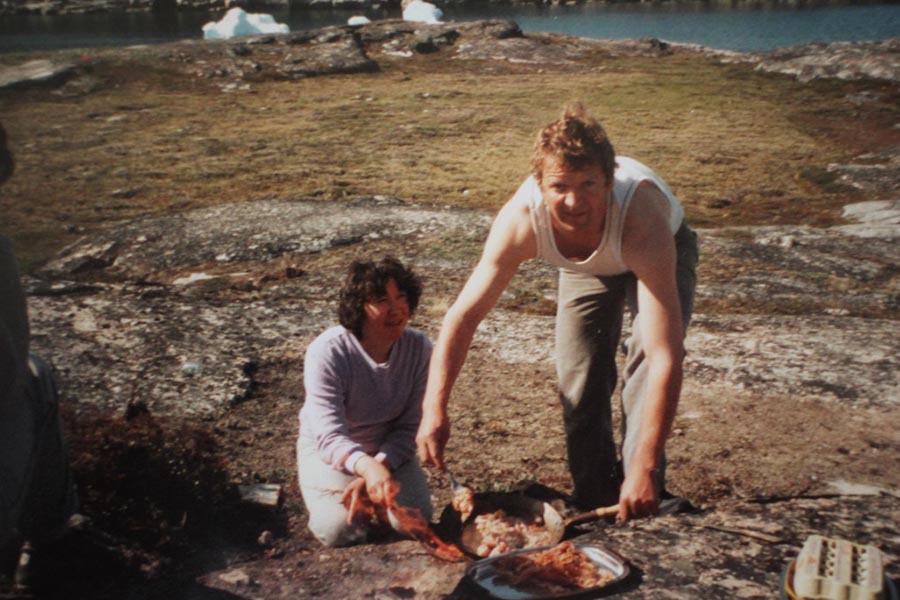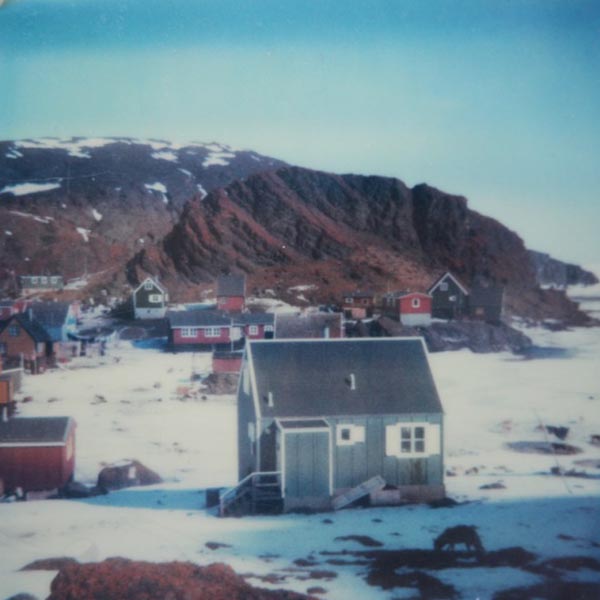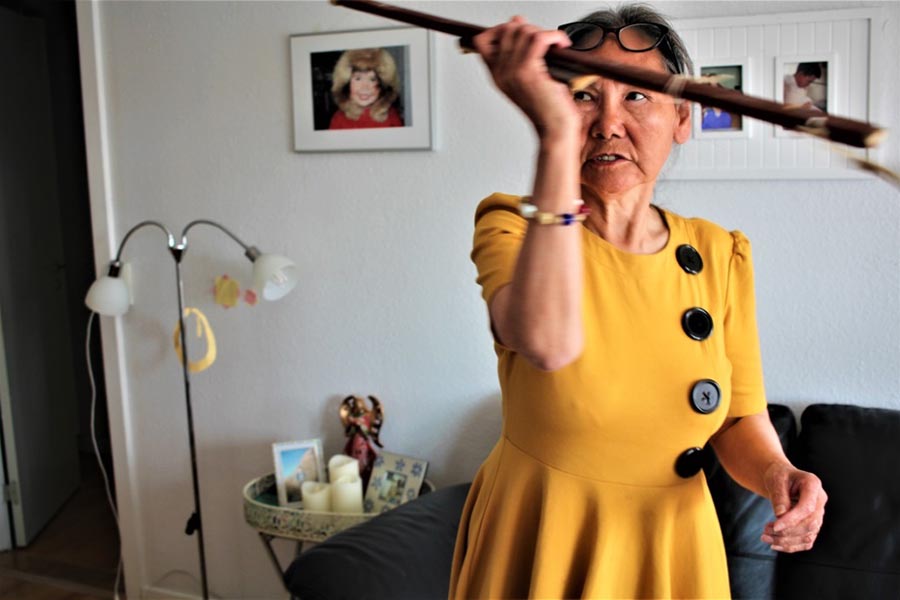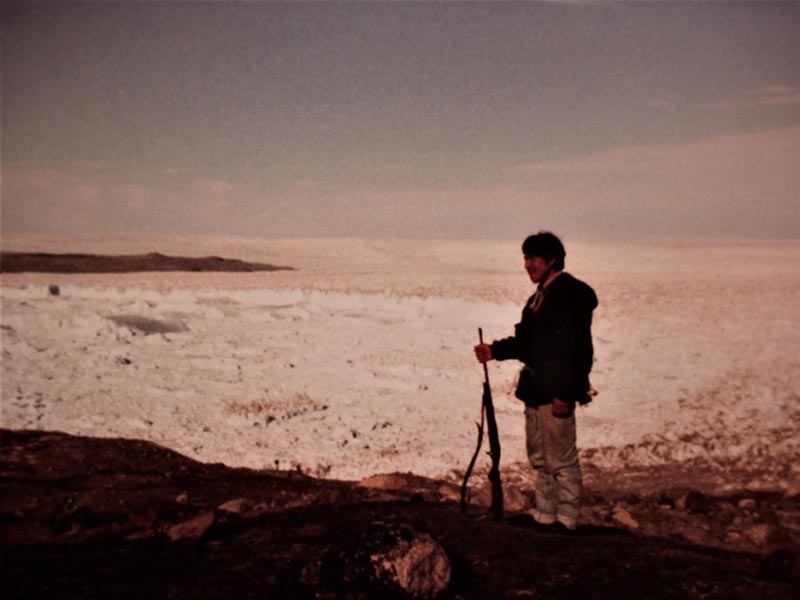The policy of "danization" of the local Greenlandic populations as viewed by inhabitants of Ilulissat
This text is a translation of an article originally written in French, published in January 2021 on the Géoconfluences website: "La politique de 'danisation' des populations locales groenlandaises et ses effets à travers la mémoire des habitants d'Ilulissat". This version in English has been co-published on the website La Clé des Langues.
Traduction by the author, reviewed and corrected by Vanessa Guignery (Professor at ENS de Lyon) and by Marion Coste (editor of the Clé des langues website)
Greenland was a Danish colony from 1721 to 1953. The colonization of Ilulissat began in 1741 with the establishment of a colony of Danish origin (Voigt Andersen, 1988 and 1991). From 1850 onwards, the last inhabitants of the Sermermiut site, one of the first two human settlements near Ilulissat (along with the Qajaa site), moved to the town (Ilulissat Icefjord Office, 2013). They thus abandoned their winter dwellings ("turf-house" (("Huts" made of large stones, wood beams and grass.)) (Mikkelsen, Ingerslev, 2008). Danish colonialism in Greenland (1721-1953) has been described as 'neo-colonialism' or even 'peaceful colonialism' (Petersen, 1995) because there was no oppression by force, economic power prevailed through the establishment of the Royal Greenlandic Trading Company (Gad, 2014), and military power was never used. Settlers did not interfere in the lives of Greenlandic hunters during the colonial period, but commercial stations were set up to compete with the Dutch who operated in Greenlandic waters (Petersen, 1995). The traditional trade in hunting products gave way to a 'pre-capitalist trading relationship' (Petersen, 1995), regulated by a state monopoly (Dunbar, 1947) and characterized by exports of products to Denmark.The Danish colonization of Greenland has sometimes been idealized as an example of peaceful or even "philanthropic" colonization, as evidenced by Paul-Émile Victor's words in Banquise (1939), in which he talks about colonization "in the interest of the colonized and not for the benefit of the colonizers". In fact, the study of Greenland during the colonial (until 1953) and post-colonial period (Greenland is still under Danish sovereignty, with a large degree of autonomy) shows that the objective of "modernization", presented in a "philanthropic" guise, was used above all to force populations to settle down in cities so that the Danes could better control and acculturate them. This article will examine the complexity of the relationship between Danes and Greenlanders, marked on the one hand by a lack of understanding between the two cultures, and on the other hand by attempts at a dialogue between these cultures. This study is mainly based on the case of Ilulissat, a small conurbation of four thousand inhabitants located on the central-western coast of the island.
In 1953, the colony status ended, with Greenland becoming a province of Denmark (Petersen, 2003). Greenland continued to be governed politically, economically, intellectually and geographically by Denmark (Nielsen, 1975), and its dependence on Denmark even increased (Petersen, 1995; Maegaard, Køhler Mortense, 2018). The consequence was the implementation of a policy of "danization", i.e. the "modernization" (from the Danish point of view) of Greenland according to the Danish model through urbanization and education, financed by the Danish state and carried out by a Danish workforce (Sorensen 1983 and 2007; Petersen, 1995). This urbanization was intended to end the population dispersion in Greenland, which had become a problem for the Danish administration and the fishing economy because of the cost of transport (Dunbar, 1947). The Danish commercial monopoly was abolished in the 1950s, and private Danish fish farms were allowed to operate in Greenland under the control of the Danish government.
How was the urbanization of the city of Ilulissat impacted by this post-colonial policy? In what way did the arrival of Danish workers (carpenters, plumbers, building painters, etc.), who came to implement this policy of "danization" of Greenland after the Second World War, influence the lives of the workers and the organization of the city of Ilulissat? To answer this question, we conducted semi-directive interviews with a Greenlandic woman from Ilulissat, Klaudia Jakobsen, who served as a Greenland-English translator. We will use the term "Greenlandic" and not "Inuit" in this article because it is the term chosen by Klaudia Jakobsen when translating what the interviewees had to say. She justifies this choice by the fact that there are differences between the different Inuit (populations from Canada, Greenland, etc.). We interviewed eight people who lived during this period of "danization": three Danish carpenters, a Greenlandic social worker, politician and hunter, a Greenlandic fisherman and hunter, a Greenlandic plumber and hunter, a Greenlandic house painter and his wife, a Greenlandic social worker, and finally, a Greenlandic woman who wished to remain anonymous. We followed the same interview guidelines for all interviewees. Our goal was to give an account of this history through the words of the inhabitants themselves who lived in Ilulissat between 1950 and 2000, through their memories and their photographs. Our approach thus ties in with the exhibition "Rethinking Northern Colonialism: A Five Act Postcolonial Exhibition Project" organized in 2006 by the curators Kuratorisk Aktion (Frederikke Hansen and Tone Olaf Nielsen), whose objective was to "write a complete history" of the colonial periods. One of the inhabitants, a Greenlandic house painter, stated: "I want to tell my story because the history of Greenland has to be told by the Greenlanders too. It's really important, because we are part of the world".
1. Building a "modern" city on the Danish model
Danish architects, carpenters, painters and plumbers arrived in Ilulissat in the 1950s and 1960s to build so-called "modern" houses, following plans by Danish architects and town planners (Petersen, 1995). In the beginning, Danish carpenters only came in the summer and all lived together in shacks (Document 1), but from the 1960s onwards some of them began to settle permanently in Greenland. Danish newspapers carried advertisements for job offers in Greenland. Danes working in Greenland enjoyed certain privileges such as higher wages and free housing (Petersen 1995).
It was rare at that time for Greenlanders to work with settlers because the law prohibited it (Madsen, 1999); it became more frequent from the 1970s onwards. There were a few exceptions however. For example, a Greenlandic plumber and hunter born in 1938, whom we interviewed, started working with the Danes in 1948 at the port and was then hired by a Dane, and started working with a group of plumbers. Family members of a Greenlandic house painter born in 1952 also worked with the carpenters. His father was specialized in metallurgy and worked with iron (Document 2). He started working with one of his older brothers, a house painter, and earned 25 crowns per hour.
Greenlanders could obtain a "modern" house by sending a request to the Greenland government. These houses cost about 15,000 crowns (whereas traditional Greenlandic houses, the "turf houses", were cheap, as they were made from local materials): Greenlanders paid 60 percent of the house and the remaining 40 percent was paid by Greenland. These new houses consisted of several rooms including a kitchen, a bedroom, a living room and a toilet. By comparison, traditional Greenlandic houses had one or two rooms where several families lived to keep the heat in (Voigt Andersen, 1991). According to a Greenlandic social worker, politician and hunter, it was also common for the Danish carpenters to come and build the foundations and structure of the house at the request of the owner and then have the owner complete the work himself. There was no electricity (they used kerosene lamps), no running water (they fetched water from the town cistern), no radiators (these houses were heated by coal), and no refrigerator until the 1960s and 1970s. In the 1960s, Danish carpenters began to build apartments based on the Danish architectural model adapted to the Greenlandic context (Document 3). These apartments were to meet a growing need for housing in the city, due to the closure of villages by the Danes.
In conjunction with this housing policy, the State pursued a policy of equipment and infrastructure construction. The hospital was expanded and the airport and the Ilulissat Museum were built in the 1970s and 1980s (Voigt Andersen, 1991). A pipe network was installed in the town and in the houses for water supply and sewage disposal. Working conditions were difficult: the pumps were heavy and six meters long, and the plumbers had no suitable equipment (Document 4).
2. Living through modernization: Greenlanders' daily practices in the face of Danish influence
Modernization proceeded extremely quickly. According to a Danish carpenter, what took several hundred years in Denmark happened in Greenland in a few decades. A Greenlander recalls: "There have been a lot of changes since 1953, when the leaders of the country changed: the way they handled money, the buildings, the organization of the city, etc.". Danish carpenters we interviewed also had the same impression of having to work hard and quickly: "I worked a lot, I planned the work during the night and only slept three hours a day. My colleagues drank a lot while I played soccer and badminton after work. I was their babysitter because I always had to look after them. For twenty men, four or five of them were missing. These were the Danes and Greenlanders who didn't show up." The transformation of the buildings was accompanied by economic restructuring. The export of fish developed during this same period around the industrial fishing of shrimp (Document 5) and Atlantic halibut (Hippoglossus vulgaris) (Dunbar, 1947), with the opening of the Danish industrial firm Royal Greenland in 1961 (Petersen, 1995; Nielsen, 2015). As these industries developed, many farmers came to settle in the city. This modernization of the economy led to employment problems. It was no longer possible to make a living solely from hunting since needs had increased: it was now necessary to be able to buy a modern house and pay for running water and electricity (Dybbroe & Moller, 1981). A few years later, sled dogs, used for hunting and fishing in the winter (Document 6), were banned from the city. They now lived on the outskirts of the city.
|
Document 5. The industrial shrimp fishery in Greenland in the 1970-1990's
Photograph taken from Paul Petersen's personal album.
|
Document 6. The use of sled dogs to hunt or fish during the winter in Greenland.
Photograph taken from Paul Petersen's personal album.
|
Modernization has contributed to the economic marginalization of Greenlanders. A Greenlandic house painter and his wife, a Greenlandic social worker, regret the fact that Greenlanders were not paid properly for their work. There was a wage difference between Greenlanders and Danes, which still exists to this day and can be observed, for example, in the police force. Danes living in Greenland did not pay taxes until 1975. According to the interviewees, the true value of the Greenlanders' traditional work was not recognized, and the price of skins was not high enough compared to the work provided. It became increasingly difficult to make a living from hunting alone. With the arrival of the large fish industries in the cities, village fishermen experienced economic hardship. The Danes also closed an entire village - Qullissat - because it was not economically viable. All the inhabitants were forced to move to the newly built apartments in Ilulissat. However, the construction of new facilities helped to improve living conditions. For example, the modernization of Greenland reduced the number of tuberculosis patients (Petersen, 1995), partly because the new 'modern' houses built by the Danes were more hygienic (Petersen, 1995).
2.1. Close relations between Danes and Greenlanders
"Modernization" was also implemented through education: the school system was separated from the Protestant Lutheran Church and Danish language teaching was established, although the teaching of Greenlandic was still authorized in schools (Petersen, 1995; Blanc-Noël, 2010). In addition, many Greenlandic children were educated in Denmark during this period (1950-2000). This is the case of a Greenlandic house painter, who first went to school in Denmark and then returned to Greenland, before moving back to Denmark to pursue a vocational apprenticeship from 1972 to 1976. He reports that it was difficult at first because he was not fluent in Danish. A Greenlandic plumber and hunter also went there to pursue a professional plumbing apprenticeship, on the recommendation of his Danish friend (Document 7). Both had a romantic relationship with a Danish woman. One was sent back to Greenland for this reason, since intimate relationships between Greenlanders and Danes were forbidden at the time. The second was able to continue his relationship until his mother asked him to return to Greenland and he parted on good terms with his girlfriend, simply remembering having received a few remarks but no prohibition.
In spite of the tensions between Greenlanders and Danes, notably due to cultural differences, some remember having maintained good relations on the whole, especially with those who had chosen to settle permanently in Greenland. Greenlanders distinguished between different types of Danes at the time: those who decided to stay, seeking to integrate and understand Greenlandic culture, and those who came only to earn money and then left. The three Danes we interviewed came to Greenland because of their interest in the land (Document 8). The Danish representations of Greenland were based in particular on the images conveyed by schools and the film Qivitoq ((Qivitoq is a docu-drama directed by Erik Balling. It focuses on a Greenlandic village and shows life in Greenland during colonization and the relationship between Danes and Greenlanders. Different jobs are portrayed in the film: we see the director of the trading post, hunters, and a "kiffa" (a Greenlandic maid in the service of the Dane).)) released in 1956 (Document 9) (Voigt Andersen, 1991; Jensen, 2015). Once there, these Danish immigrants did not want to leave Greenland: they married Greenlandic women and started families (Document 10).
|
Document 8. Greenlandic landscapes as seen by a Dane
Photograph from Gunnar Skov's album, showing a landscape and the colors of Greenland that he had been dreaming of seeing since he had heard about it at school.
|
Document 9. Qivitoq (1956), film directed by Erik Balling
Photograph from the archives of the Ilulissat Museum showing an excerpt from the film Qivitoq released in 1956.
|
In spite of the wealth gap between Danes and Greenlanders, including the gender pay gap mentioned above, friendships have been formed between Danes and Greenlanders, offering some Greenlanders access to some benefits. A Greenlandic carpenter and hunter recounts how his friendship with a Dane opened up opportunities for him: "It was really good because my Danish friend took care of me. I lost my father at a very young age, so I didn't have any sailing equipment. I didn't sail, I just watched the ocean because my father wanted me to become the family hunter. I was really happy to start working with my Danish friend because he took me sailing with him. I started sailing with him on a boat and we rowed and caught birds together. At that time there weren't many boats, some people still used kayaks to sail, but I didn't have any. My friend borrowed a boat for us to sail, really few people had boats. He gave me opportunities that I didn't have. I was really happy to work with him. He also bought a group of eleven sled dogs and took care of them. We went to Oqaatsut (Rodebay) with the dog sled" (Document 11).
But a Greenlandic carpenter who received vocational training in Denmark admitted that he found it easier to live in Denmark after becoming more fluent in Danish: he felt part of the Danish society and never felt excluded. Thus, through his friendly exchanges with Danes, he felt welcomed in Denmark.
2.2. Hunting and fishing, markers of an ancestral Greenlandic way of life?
Urbanization has transformed lifestyles that were organized on a smaller scale around villages (Document 12). In villages, most of the men were hunters and fishermen. There was a priest, a teacher and a "trading manager" (the director of a colonial trading post). Before 1960, at the end of the "danization" period, the inhabitants of the villages were, according to a Greenlandic social worker, united: they abode by an oral rule which consisted in helping each other so that no one was in distress. When the hunters returned with game, they shared it with the whole village.
Their parents had taught them the life of a hunter: the sons knew how to hunt (Document 9) and the daughters knew how to prepare meat and skins. A Greenlandic social worker, politician and hunter, who was also born in a village, remembers his father paddling his kayak, and the fact that at that time they used all the parts of seals: meat, fat, skin, etc. (Document 10). After catching a seal, they had to carry it by pulling it with a rope. Today, they are sometimes dragged behind cars, which he finds hard to bear: "I really respect seals, especially harp seals. Nowadays, I sometimes see seals tied up behind a car, it hurts me because in my day we used to use our own hands to pull them. You have to respect the seals".
Prior to Danish colonization in the mid-18th century, the population of Greenland was nomadic and lived from hunting and fishing (Mikkelsen, Ingerslev, 2008). The techniques of these activities evolved with the arrival of the Europeans. Hunters began to use firearms and fishermen later used nylon fishing nets. This technical evolution resulted in increased pressure on the natural environment. The exchanges with Europeans also made nomadic life less and less viable as Greenlanders became increasingly sedentary. Nevertheless, many of them continued to hunt and fish during and after the modernization of Ilulissat in the 1950s. Some even became full-time fishermen. Others hunted after work or in their free time. The Greenlandic plumber and hunter describes his situation as follows: "I've lived like this all my life: working and hunting. I can't live without hunting, so I'm always hunting after work. I used the money from hunting as extra money." It was important for him to hunt because his father had always told him that he would be the "family hunter". When he had time on the job, he would run out to Ilulissat Fiord to look at the ice to see if it was possible to hunt (Document 14).
He sees himself as a hunter, his job as a plumber being "just to make money," which is different in his eyes. Being a "hunter" is a way of life for him: "I feel at peace when I hunt. I remember changing right away during dinner. I was so excited to go hunting that I was sweating. I couldn't wait to go hunting". It was also a way to earn some extra money by selling the pelts of the hunted animals that his wife had prepared with a knife called an ulu (Handout 15). Another Greenlandic hunter testifies: "It's in our blood to go to the ocean. I always had a boat, and when I left work after 6 p.m., I would hurry to go hunting and come back around 9 p.m. with seals or birds". Hunting is still a cultural activity that is considered as part of their identity, and is one of the activities allowed on the site of the Ilulissat fjord which is now classified as a UNESCO World Heritage Site.
Conclusion
This article has shown how the testimonies and memories of the inhabitants of Ilulissat reflect the "danization" of Greenlandic society in the context of the annexation of the Greenlandic territory that became a Danish province (Blanc-Noël, 2010). However, this process did not prevent a contrary movement of "Greenlandization": indeed Greenlanders have enhanced the value of the Greenlandic culture and language, while also appropriating the legislative and executive powers in internal management and economic matters (hunting, fishing, breeding), education, environment, culture, etc. From the moment Denmark joined the European Economic Community (EEC) in 1972, Greenlanders began to challenge Danish power and a nationalist movement emerged. In 1977, the Inuit Circumpolar Conference (ICC) was created. In 1979, Greenland obtained a statute of internal autonomy (Körber, Volquardsen, 2014; Maegaard, Køhler Mortense, 2018) and then withdrew from the EEC in 1985 in order to protect its fish resources in the face of European competition (Gad, 2014), making it the first case of exit from an economic union territory before Brexit in 2019. Greenland is now an autonomous territory within the 'Community of the Danish Kingdom' and an Overseas Country and Territory of the European Union (OCT), a status corresponding to the autonomous territories dependent on EU states. Since the vote on 21 June 2009, the Enhanced Greenland Self-Government Statute has come into force, recognizing Greenland's right to self-determination (Blanc-Noël, 2010). In 2013, the Greenland Home Rule Government established a reconciliation commission to investigate the effects of settlement in Greenland (Jacobsen, 2014). Its aim is to find a political equivalent in Greenland to the forms of hybridization that already exist in the daily lives of the inhabitants of Ilulissat, combining Danish practices, such as living in apartments, with ancestral Greenlandic practices such as seal hunting.
Notes
Bibliographie
- Blanc-Noël N., 2010, « Danemark. La souveraineté du Groenland est-elle possible et souhaitable ? », Grande Europe n° 24, En ligne.
- Dunbar M. J., 1947, "Greenland During and Since the Second World War", in Stefansson, Vilhjalmur, Encyclopedia Arctica 14: Greenland, Svalbard, Etc. Geography and General 1879-1962, Ed. Vilhjamur Stefansson.
- Dybbroe S., Moller p., 1981, „Om betingelsernefor Gronlands kolonisering. Skitse til en analyse". Moesgaard, Afdeling for etnografi og socialantropologi.
- Gad, U. p., 2014, "Greenland: A post-Danish sovereign nation state in the making", Cooperation and Conflict, 49 (1), 98-118.
- Ilulissat Icefjord Office, 2013, Experience Kangia, Ilulissat Icefjord, Grenland, Ed. Ilulissat Icefjord Office.
- Jacobsen S., 2014, "Greenland commission will probe Danish colonial abuses", Reuters.
- Jensen, L., 2015, "Greenland, Arctic Orientalism and the search for definitions of a contemporary postcolonial geography", KULT. Postkolonial Temaserie, 12, 139-53.
- Körber L.-A., Volquardsen E., 2014, The Postcolonial North Atlantic, Iceland, Greenland and the Faroe Islands, ed. Nordeuropa-Institut der Humboldt-Universität.
- Madsen J. C., 1999, Slid og slæb. En skildring i ord og billeder af håndværkerlivet i Grønland 1950-1970, ed. Forlaget Atuagkat.
- Maegaard M., Køhler Mortense K., 2018 (working paper), "Meeting the Greenlandic people – mediated intersections of colonial power, race and sexuality", Tilburg Papers in Culture Studies, Babylon, Center for the Study of Superdiversity.
- Mikkelsen N., Ingerslev T., 2008, Ilulissat icefjord nomination document for the world heritage site, GEUS.
- Nielsen F., 1975, Kalâdlit-nunâne nakiterisitsissarfik, ed. Det grønlandske forlag, Heftet.
- Nielsen J. V., 2015, International design competition, Ilulissat Icefjord centre, Greenland, competition brief, ed. Government of Greenland, Qaasuitsup municipality, Realdania.
- Petersen R., 1995, "Colonialism as seen from a former colonized area", Arctic Anthropology, vol 32, no. 2, p. 118-26.
- Petersen R., 2003, Settlements, kinship and hunting grounds in traditional Greenland, A comparative study of local experiences from Upernavik and Ammassalik, ed. Copenhagen : Museum Tusculanum press.
- Rud S., 2017, Colonialism in Greenland, Tradition, Governance and Legacy, Copyright, ed. Palgrave Macmillan.
- Sørensen A. K. 1983, "Danmark-Grønland i det 20. Århundrede", København.
- Sørensen A. K. 2007, "Denmark-Greenland in the Twentieth Century", Monographs on Greenland, Man & Society nr. 34., København.
- Victor P-E., 2015, Banquise, Points Aventure, 600p.
- Voigt Andersen M., 1988, Ilulissat Katersugaasiviat, Jakobshavn museum, Ilulissat museum, ed. Jakobshavn museum.
- Voigt Andersen M., 1991, Jakobshavn, Ilulissat, 1741-1991, ed. Ilulissat museum
The author would like to thank all the people who have agreed to answer her questions and to show her their family albums.
Pour citer cette ressource :
Andréa Poiret, The policy of "danization" of the local Greenlandic populations as viewed by inhabitants of Ilulissat, La Clé des Langues [en ligne], Lyon, ENS de LYON/DGESCO (ISSN 2107-7029), décembre 2021. Consulté le 01/01/2026. URL: https://cle.ens-lyon.fr/anglais/se-former/dnl/dnl-geographie/the-policy-of-danization-of-the-local-greenlandic-populations-as-viewed-by-inhabitants-of-ilulissat





